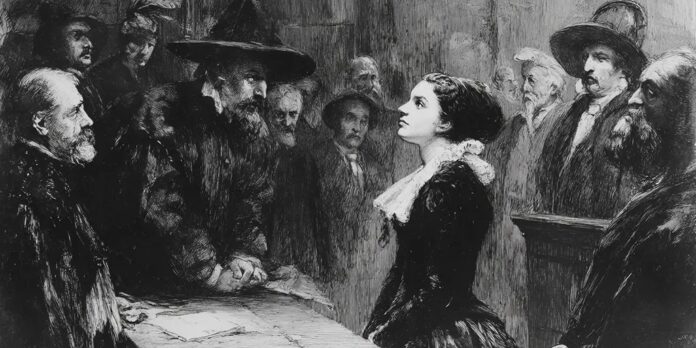In yet another theatrical act of lawfare against the fossil fuel industry, Misti Leon has launched a wrongful death lawsuit against seven oil and gas companies, alleging they were responsible for the tragic passing of her mother, Juliana Leon, during the 2021 Pacific Northwest heatwave. The legal argument? That anthropogenic emissions from these companies directly caused the heatwave and therefore, her mother’s death. This suit, announced on May 29, 2025, marks a new chapter in the ongoing campaign to litigate weather.
The idea that any single heatwave—or any isolated weather event—can be laid at the feet of specific industrial actors stretches credulity. But this isn’t about evidence. It’s about constructing a politically useful narrative. The 2021 heatwave, which indeed brought record-breaking temperatures to the region, is now being used as a legal battering ram against energy producers. But the scientific scaffolding behind this claim is conspicuously hollow.
The event in question occurred in June 2021, when temperatures in the Pacific Northwest surged past 108°F. Juliana Leon died in her vehicle on a sweltering day in Ferndale, Washington, with a broken air conditioner and windows rolled down—a tragic circumstance exacerbated by her recent bariatric surgery and increased vulnerability to heat. The lawsuit alleges that oil companies failed to warn the public about the dangers of climate change and actively sowed doubt about the “consensus” on global warming. Yet none of this explains why individual risk factors, personal decisions, and public weather warnings play no role in the plaintiff’s logic. It’s a crude scapegoating operation masquerading as justice.
On the scientific front, the lawsuit relies on a distorted interpretation of “climate attribution science”—a burgeoning field that attempts to assign probabilistic blame for weather events to human activities. In the immediate aftermath of the heatwave, NOAA analysts called it a “1,000-year event,” with some attributing its occurrence to man-made climate change. But more rigorous follow-ups told a different story.
A 2024 study published in Nature Communications makes clear that the 2021 event defied conventional climate modeling. The authors describe the heatwave as a statistical and dynamical outlier—so extreme that it exposed fundamental weaknesses in current modeling frameworks. Specifically, their simulations could not reproduce an event of similar magnitude under standard greenhouse gas forcing scenarios. The study notes:
“We find that the models analyzed largely fail to simulate events as extreme as the 2021 heatwave. This discrepancy calls into question their ability to assess the frequency and drivers of such events accurately.”
https://journals.ametsoc.org/view/journals/wefo/39/2/WAF-D-23-0154.1.xml
This is not a ringing endorsement of attribution science—it is a direct indictment of its limitations.
Even the World Weather Attribution (WWA) group, typically eager to draw a straight line between emissions and extreme weather, conceded that this particular heatwave exceeded their models’ capabilities. They went as far as to speculate about unknown feedback mechanisms—an admission that the scientific community doesn’t fully understand what happened, much less why. The authors of the Nature paper went further, calling the event a “Black Swan,” a chaotic one-off driven more by atmospheric randomness than CO₂ levels.
But nuance isn’t useful when constructing a climate morality play. Instead, the lawsuit conflates correlation with causation, implying that the presence of emissions means culpability for any and all associated weather extremes. The plaintiff’s lawyers want it both ways: they allege the event would not have happened without climate change and simultaneously argue that climate change merely worsened it. Which is it? As meteorologist Ryan Maue wryly noted, “You can’t argue both. Pick one.”
Equally problematic is the suit’s attempt to pin liability on oil companies for not publicizing the dangers of climate change. This overlooks the elephant in the room: forecasts for the heatwave were accurate, publicly disseminated, and well-publicized. The National Weather Service issued timely warnings. If there was a failure, it was not one of awareness. Juliana Leon tragically encountered a lethal environment, but the proximate causes—lack of A/C, personal health risks, and direct exposure—don’t involve ExxonMobil or Chevron.
This suit is emblematic of a growing trend in climate litigation: ignore the uncertainties, simplify the science, and vilify an industry. As the Sabin Center for Climate Change Law gleefully documents, more legal cases are targeting fossil fuel companies—not for direct environmental harm, but for their alleged ideological noncompliance. “Disinformation,” “denial,” and “deception” are the new torts.
What’s at stake here isn’t compensation or justice; it’s control. These lawsuits are tools of policy-making by other means. Unable to pass sweeping Green New Deal-style reforms legislatively, climate activists are turning to the courts to impose de facto regulations through liability judgments. If successful, this lawsuit could open the door to endless claims—each one blaming oil producers for everything from floods to frostbite.
Make no mistake: Juliana Leon’s death is a tragedy. But exploiting it as a cudgel in the unscientific crusade of climate attribution is an abuse of both science and law. If the courts lend credence to such spurious reasoning, they won’t just be sanctioning junk science—they’ll be encouraging it.
This is lawfare dressed in climate robes, and it’s time to call it what it is: a cynical, opportunistic campaign built not on facts, but on fervor.
Related
Discover more from Watts Up With That?
Subscribe to get the latest posts sent to your email.



